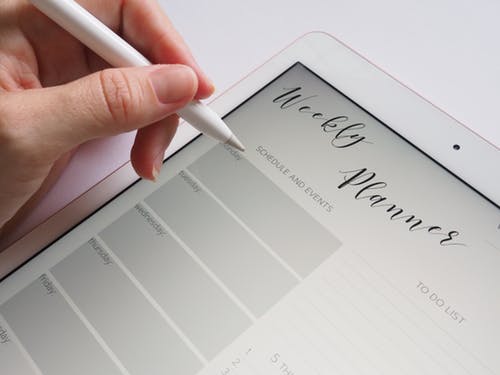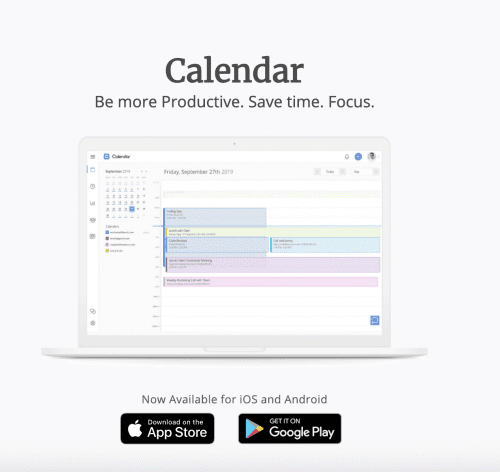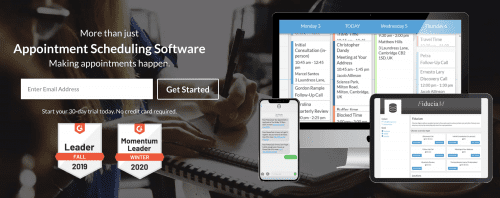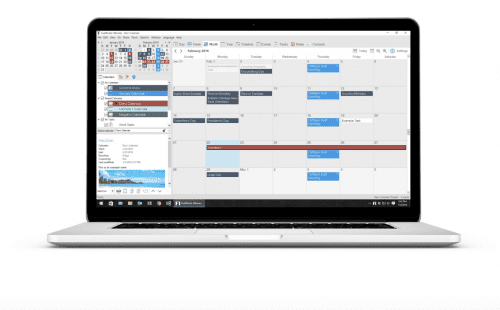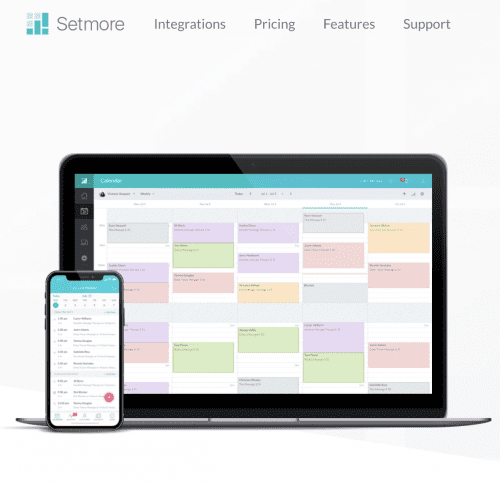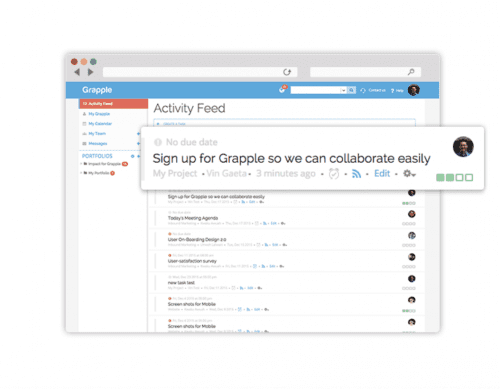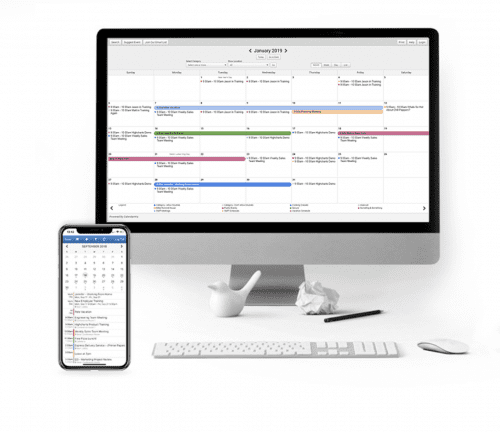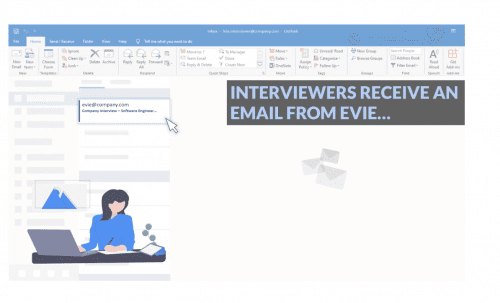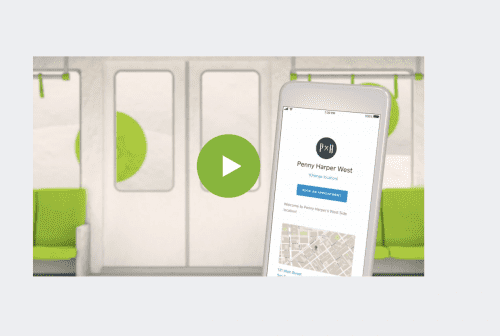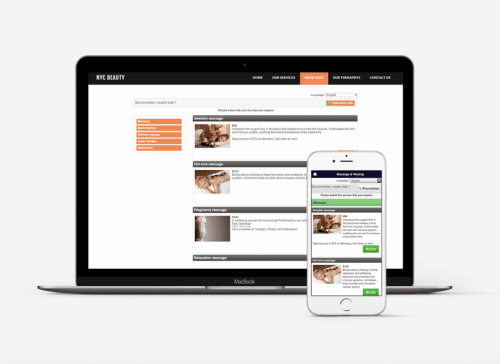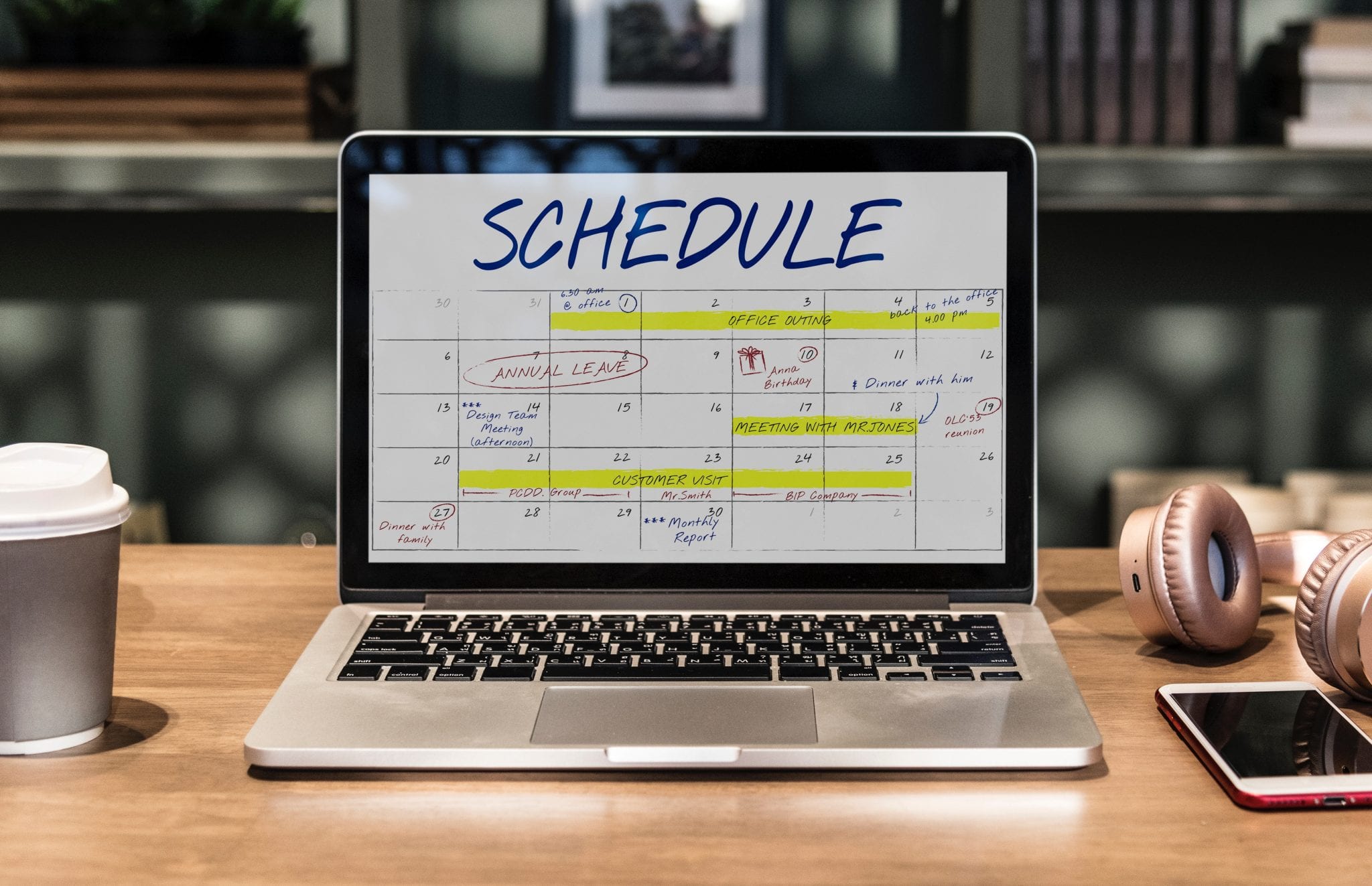
Like many others, I’ve spent years on a productivity quest. That may sound hyperbolic. But, think about it. We’re constantly adjusting productivity strategies and experimenting with new hacks.
Sometimes this works out, other times they don’t. And, that’s okay. Productivity is discovering what works best for you and being flexible enough to implement these changes.
But, I have noticed something throughout this journey. All of these hacks and techniques are pointless if you first haven’t tracked your time.
That more sound laborious. However, being productive gives you purpose. It’s also good for your health and wellbeing. And, because you’re getting more done in less time, it improves the quality of your personal and professional lives.
To figure this out, we can use one of the following methods; productivity journals and time trackers. While there are differences, both have the same goal; helping you become a lean, mean productivity machine.
Each method gives you a chance to pinpoint your personal production peaks. They also give you a chance to clarify your goals, track your progress, and reflect on what works and what doesn’t. They can even let you know where you’re wasting time and what’s getting in the way of your productivity, such as your biggest distractions.
Possessing this knowledge allows you to make the proper adjustments so that you can finally work smarter, not harder. But, which method should you use? Well, let’s figure that out.
What Are Productivity Journals?
As the name implies, productivity journals are journals that document your productivity. Although you might be tempted to think of this as a diary, that assumption couldn’t be further from the truth.
“Sure, it’s a place to log your activities, but the logging of those activities is more matter-of-fact than emotionally driven,” explains Jessica Greene over at Zapier. “It’s more ‘I worked on a blog post all day’ and less ‘Writing this post reignited my dreams of launching my own blog.’
“You can add entries to a productivity journal as often or infrequently as you want,” adds Greene. “Each time you complete a task, at the end of the day, or even once a week. And you can document that information wherever you want: A paper notebook, an app, or anywhere else that saves text.”
The only criteria are you “save everything you write in it” and keep in one location. Why? Well, you’ll need this information so that you can “go back and access previous entries to see how you spent your time on different types of tasks and projects.”
How do you use it?
The best thing about productivity journals is that they’re flexible and simple to use. In fact, you can create a powerful productivity journal in just three steps:
- Record. List your big goals for the day, week, month, quarter, or year. Keep this to no more than 8 items so that you don’t get overwhelmed. Next, break these down into more manageable mini-goals.
- Analyze. Track your progress, tasks, and emotion for a month. You’re doing this to pick up on patterns so that you know your energy highs and lows, where you succeeded, and what needs to be developed upon.
- Improve. Analyze your data so that can clearly see where you need to improve. For example, what if you notice that you have the most energy and focus in the morning? Then that’s when you would start scheduling your most important or challenging tasks for the day.
Another practice would be writing down your top goal for the day. It will remind you what you’re working towards on a daily basis, explains Jari Roomer. Other key components for this method would be setting 1-3 daily goals/targets/intentions, the lessons learned, and your daily wins. Roomer also suggests jotting down any thoughts or ideas that pop-up.
For more complex journaling practices you could try Interstitial Journaling. “During your day, journal every time you transition from one work project to another,” explains Tony Stubblebine—Founder and CEO of Coach.me. “Write a few sentences in your journal about what you just did, and then a few more sentences about what you’re about to do.”
He adds that this world well with the Pomodoro Technique. After working for a 25-minute block, journal for 5-minutes. At the minimum, note the time, what you just accomplished, and what you’re going to do next.
The pros and cons of journaling.
As someone who enjoys writing, I’m a champion of journaling. I find it therapeutic and it gets all of these ideas out of my head so that I can focus. Moreover, it brings clarification to my goals and allows me to reflect on my progress.
Additionally, assist you in prioritizing problems and identifying solutions. Science has also found that journaling can stretch your IQ, invoke mindfulness, improve your memory, and spark your creativity. It can also help you develop emotional intelligence, self-discipline, and stringer communication skills.
That doesn’t mean that productive journaling is flawless. It can also be time-consuming and difficult to analyze. Mainly this is because journaling focuses more on how you feel. That makes it easier to overlook certain problems, such as unconscious behaviors like spending too much time on a website.
The best tools for productivity journaling.
If you want to give productivity journaling a chance, you just need a notebook and a pen. However, there are notebooks specifically designed for this task. There are also some digital options if you want to be more eco-friendly and access your planner from your devices.
1. The Productivity Planner
Printed on sustainable paper, this planner is pretty straightforward. It helps you set your most important and secondary tasks for the week. It also allows you to rate your productivity for the day, plan your week, and stay focused with the Pomodoro work system.
2. Bullet Journal
“Created by Ryder Carroll, a digital product designer, in 2013 bullet journaling is simply a method for note-taking and day-planning using good ol’ paper and pen,” explains Calendar co-founder John Hall. In other words, it’s a “customizable journal that’s a cross between a planner — to-do list — and diary” designed for rapid logging.
3. Franklin Covey Planners
Considered the grandfather of all planners, these will help “you to identify values, create successful habits, and track and achieve your goals.” What’s more, there is a variety of options ranging from daily planners to monthly calendar tabs.
4. Passion Planner
Sure, the #pashfam rely on this to organize their lives and keep track of their goals. But, for them, they consider the Passion Planner as a “paper life coach.” They offer a variety of colors and options like weekly, annual, and academic.
5. The SELF Planner
“The Self Planner helps you master your time, focus on what’s important, and take control of your life — every day,” states it’s site. “Use the various templates to get clear on your priorities, mastermind your future, and infuse every day with the things that matter most to you.”
6. The ONE Thing Planner
Based on the personal planners of coauthors Jay Papasan and Gary Keller, this planner is intended to help your identify your priorities. From there, you can use it to make sure that your daily activities are aligned with them.
7. The Mastery Journal
The makers behind this journal state that this “will guide you in mastering productivity, discipline, and focus in 100 days.” It was developed by entrepreneur John Lee Dumas, who used these skills to build multiple multi-million dollar businesses.
8. The High-Performance Planner
You can use this planner to get into the right mindset, prioritize your goals, rate your performance, and strategically plan your day. Since it’s also a journal, you can capture thoughts and ideas and take note of where you need to improve.
9. The Morning Sidekick
If you want to have a productive day, then you need to start off on the right foot. And, that’s exactly what this journal does. It encourages you to self-reflect, plan your day, and map out your biggest task. There are also pages to track your progress to hold yourself accountable.
10. Note-taking apps.
Finally, if you want to go digital, you’re in luck. If you use the big three, then there’s Microsoft OneNote, Apple Notes, and Google Keep. But, there’s also the popular Evernote app that’s ideal for everyone. If distractions are an issue, try out Simplenote.
Of course, you could also track your productivity using a spreadsheet management expert and author Jim Collins or this one from Chris Baily. There are also premade worksheets like the 168 Hours Timesheet.
What Are Time Trackers?
Time trackers essentially do the same thing that productivity journals do. They shine a light on when you’re most energetic, focused, and motivated. Additionally, they can pinpoint when and where you’re wasting your valuable time.
The key difference? Time trackers are digital tools that run in the background of your devices. That means they track your time automatically without you even realizing it. Better yet, they analyze the data and make suggestions on where and how to improve.
How do you use it?
Here’s what’s great about time tracking apps and software. Just download it and you’re pretty much all set. Some tools will just automatically track and categorize how you’re spending your time on your computer or phone.
Others, however, will require you to hit start, pause, or end. Usually, these types of solutions are used more for billing purposes. But, they can still provide an accurate picture of what your screen time looks like in real-time.
The pros and cons of time trackers.
The main advantage with time trackers is that you don’t have to manually do this task. You can essentially set it and forget it. That’s perfect if you feel that journaling is too time-consuming and tedious.
Another perk is that these tools are more accurate and objective then productivity journaling. They are literally monitoring your activity to see when you’re most productive and what distracts you. They will then analyze this information and show you how you can work better.
But, just like journals, there are issues with time tracking. Most notably, they don’t take into account the emotional context of work. Why is that important? Because emotions provide insights into what motivates you and how to improve your performance.
Another drawback is that there isn’t offline functionality. You may even forget to track tasks like checking your email or attending meetings. And, there are also times when the app or software is buggy and provides inaccurate reports.
The best time tracking tools.
If you decide to use a time tracking tool, here are some of the best options available.
1. Calendar
Calendar is a scheduling tool that also provides analytics to see where your time is going. It uses machine learning to review data like meeting distribution. As a result, it will make smart suggestions on when and where to plan your next event. It can even provide a breakdown of who you’re spending time with.
2. Toggl
Available for iOS, Android, the web, Toggl offers a basic version or a more robust paid option. It’s a popular time tracking tool thanks to its simple interface. In fact, you can get started with just one-click. If you forget, it will remind you to start tracking. Another cool feature is the ability to track idle time.
3. RescueTime
As with Toggl, RescueTime is available for Android, Apple, and desktops. It also only takes one-click to get started. However, it automatically tracks the time you spend on apps, websites, and documents. It can even block the most distracting sites and apps as well.
4. Timely
Timely is another tool that will start to automatically track your time by running quietly in the background. It also uses AI to analyze and categorize how you’re spending your time. It can be used for individual use or for teams.
5. Harvest
If you’re flying solo, Harvest is an excellent tool for tracking billable hours. If you have a team, Harvest can keep track of your team’s time via timesheets. In addition to being compatible with most phones and browsers, it also integrates with tools like Slack, Trello, and Zapier.
6. Clockify
What makes Clokify stand out is that it’s 100% free. But, don’t let that fool you into thinking it’s subpar. With this tool, can track hours using a timer, categorize time by project, and mark time as billable. It also provides a visual breakdown of how you’re spending your time.
7. Timeular
Unlike the other selections listed here, this is actually a nifty 8-sided dice. After assigning an activity to each side, you simply place it on your desk. When it’s time to start an activity flip it to start. It is accompanied by a mobile and desktop app as well.
8. Wrike
Wrike flawlessly combines project management and time tracking. Although it may not be the most accurate time tracker, it’s definitely helpful when collaborating with others.
9. Time Doctor
Time Doctor is a fully customizable tool designed for teams. It takes screenshots to track activity, reminds you to stay off distracting apps and sites, and even monitors when users take breaks. You can also organize it to track the time spent on specific projects and clients.
10. Forest
Forest is an app that’s mean to keep you focused and present. How? By being a gamified Pomodoro timer, time tracker, and app blocker all rolled into one. Even better, the app has partnered with Trees for the Future to plant real trees.
The Final Verdict
Which method is more effective? Well, that’s totally up to you depending on your preferences and goals. If you want to stop wasting time on your screen, time trackers can produce more accurate insights. If you want to improve your motivation, productivity journaling may be the way to go.
In my opinion, I think a hybrid approach is best. Journaling gives you that much needed emotional context, while time trackers deliver hard data. Combining that information gives you a better understanding of how you’re spending your time and where to improve.


